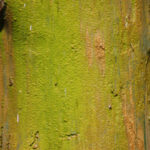An aquatic pet snail is hobbyist’s secret weapon against algae buildup in the fish tank, but what about the land snail? Living longer than many rodents, terrestrial pet snails are good alternative companion animals for kids living in no-pet apartments.
From Escargot to Pet: Snails a.k.a. Terrestrial Gastropod Mollusks
Pet snails do not bite, scratch, bark, hiss, claw the furniture or require walks in the middle of a torrential downpour. They can live as long as 15 years(1), outliving hamsters, pet rats and mice. They do not require tanks with expensive conditioning chemicals or fall victim to exotic diseases necessitating costly treatments.
In short, a pet snail is the perfect pet for the hobbyist who does not mind a bit of slime and is more interested in a living showpiece than a hands-on pet that requires daily human interaction.
Pet Snail Behavior Determines Terrarium Setup
An inexpensive mid-sized plastic terrarium with a ventilated (and lockable) lid is a suitable habitat. An old fish tank with a locking mesh lid is another option. Use vermiculite or sphagnum moss as the substrate at the bottom of the tank. Natural chalk provides calcium for the shell; a hollow log (available at exotic pet stores) or overturned clay pot doubles as a hideaway and sleep area.
While some pet snails are actually sold online and in exotic pet stores, the cheap fancier needs to go no further than the backyard to bring back a pair of helix land snails (i.e. Helix aspersa). Setting up a terrarium for native snails that are collected in this manner is simply done by mimicking the conditions in which the animals were found. When purchasing exotic species, consider the pet snail behavior ascribed to them when putting together the habitat.
What Kind of Plants Do I Need for Pet Snails?
A daily supply of banana, apple or cucumber slices as well as fresh (well washed) green leaves offer nutrition. Examples include dandelion leaves(2), lettuce and spinach. Avoid the more exotic kinds of vegetation that are not native to the pet snails’ habitat. Of course, a pet snail may let the fancier know rather quickly which plants to avoid simply by not consuming the leaves. I have found that water-soaked dry cat food (in small quantities) is virtually irresistible to the average snail.
Commons Mistakes First-timers Make When Keeping Pet Snails
- Mixing species is a no-no. Just because a number of different snails co-exist in the backyard does not mean that they get along in the terrarium. A good example is the introduction of the visually pleasing but carnivorous decollate snail (Rumina decollata) that actually preys on the garden snail(3).
- Insufficient hygiene after handling snails or cleaning the terrarium. Even pet snails factor into the zoonoses debate. They may carry the rat lungworm (leading to eosinophilic meningoencephalitis in humans(4)) or other disease causing agents.
- Placing the terrarium in direct sunlight or under a heat-producing lamp is ill-advised. It dries out the substrate and kills the pet snails.
- Keeping more than two snails and not removing the eggs promptly. Since snails are social beings, it is advisable to keep more than one at a time. That being said, they breed prolifically and it is not unusual to find up to 120(5) eggs after mating, which takes place about five times a year. Not surprisingly, the terrarium is soon overrun with baby snails – unless the eggs are removed.
Sources
(1)http://www.petsnails.co.uk/care/intro.html#start
(2)http://www.weichtiere.at/english/gastropoda/terrestrial/escargot/pet_snails.html
(3)http://entomology.ifas.ufl.edu/creatures/misc/gastro/snail_eating_snails.htm
(4)http://www.aphis.usda.gov/plant_health/plant_pest_info/gas/downloads/achatinafulica.pdf
(5)http://entomology.ifas.ufl.edu/creatures/misc/gastro/brown_garden_snail.htm





